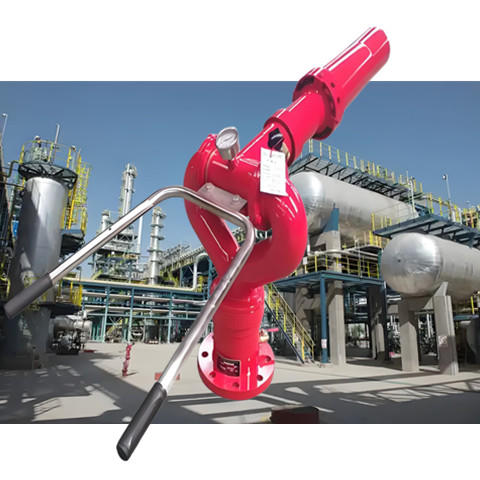Understand different foam fire monitors
Foam fire cannons are vital firefighting tools used to combat class A, B, and C liquid and solid material fires. These fire cannons are essential for industrial-grade fire suppression, particularly in hazardous environments such as petrochemical plants, storage tank areas, ports, docks, and even on fire trucks and ships.

Mechanical Structure and Design
A foam fire cannon typically consists of the following components:
Base: The foundation that supports the entire system.
Rotating Body: The part of the cannon that allows horizontal and vertical rotation.
Injection System: The mechanism that mixes and discharges the foam.
The cannon supports 360° horizontal rotation and pitch movement, ensuring complete coverage of fire-prone areas. Safety is prioritized with a locking device that ensures stable positioning during operation.
Types of Foam Fire Cannons
Foam fire cannons are categorized based on the foam intake method and installation type.
1. Foam Intake Method
Self-priming (Internal Mixing): In this type, the foam is mixed automatically within the cannon itself, making it independent of external systems.
Non-Self-Priming (External System Dependency): These cannons rely on external systems to mix water and foam concentrate.
2. Installation Type
Fixed Type: Commonly used in stationary locations, such as petroleum tank farms and fixed storage areas.
Mobile Type: These are often mounted on fire trucks, vessels, or portable units for quick deployment in emergency situations.
The foam fire cannon works by combining water from a firefighting pump with foam concentrate. This mixture is pressurized and then rapidly ejected through the nozzle. The high-speed foam covers the fire source, forming a protective barrier.
Firefighting Mechanism
The foam works by creating a foam layer that performs three key functions:
Oxygen Isolation: The foam layer suffocates the fire by preventing oxygen from reaching the flames.
Heat Radiation Blockage: It helps shield surrounding areas from the intense heat.
Cooling Effect: The foam lowers the temperature, helping to extinguish the fire.
Ideal Applications
Foam fire cannons are best suited for environments where large quantities of flammable liquids or solids are stored or handled. They are commonly deployed in:
Liquid Storage Tank Farms (Class A/B/C liquid fires): Ideal for tanks with diameters less than 18 meters and fixed roofs.
Petrochemical Loading and Unloading Stations: Essential for handling high-risk, flammable substances.
Port and Dockside Areas: Crucial for protecting valuable cargo and infrastructure.
Firefighting Vehicles and Ships: Mobile units that can be deployed quickly during emergencies.
Common Models
PLY8/24/32 Series: Mobile foam-water dual-purpose cannons designed for flexible use in various firefighting situations.
PSY30/50 Series: These models offer adjustable flow rates, making them versatile for different scales of fires.
Foam fire cannons are a critical tool in industrial fire safety, providing effective suppression for flammable liquid and solid fires. With features like adjustable flow rates, reliable foam mixing, and versatile installation types, they are indispensable in locations such as petrochemical facilities, tank farms, and ports.



